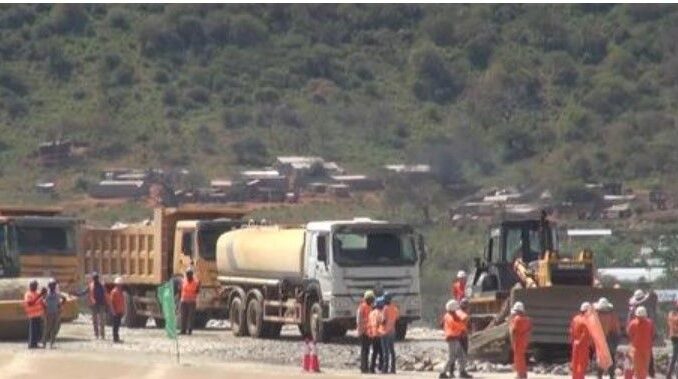
The Chinese-built Thwake Multipurpose Dam in Kenya is almost complete, and its commissioning later this year will pave the way for the country’s socio-economic transformation.
The dam, located at the intersection of the rivers Thwake and Athi, in the south of Kenya, is constructed by China Gezhouba Group Co, is the pioneer project of China-Kenya joint construction of the Belt and Road Initiative and the flagship project of the Kenya government’s Vision 2030.
The project comprises a multi-purpose dam designed to increase water storage for rural and urban domestic use, irrigation, livestock and for hydropower with a principal focus on the semi-arid counties of Kitui and Makueni where the dam is located. At least 1.3 million people are expected to benefit from the Thwake Multi-purpose Water Development Program (TMWDP).
The dam’s reservoir has a catchment area 10,272 square km, with a volume 688 million cubic metres. The dam project is being implemented in four phases at a cost of $613 million.
KENYA ADAPTING TO COPE WITH CLIMATE CHANGE CHALLENGES
Kenya’s water resources are highly vulnerable to climate variability. This often leads to floods and droughts. The country’s inadequate storage capacity limits its ability to buffer against the many water shocks and shortages.
With the current access to clean water in Kenya estimated at 90 percent in urban areas and 44 percent in rural areas, there remains a challenge in ensuring there is enough water for irrigation. This means that the country has suffered continuous food shortages in the dry seasons while in some cases the rainy seasons bring with them the destruction of food crops when it floods.
Kenya is “chronically water scarce” with water availability currently standing at 647m3 per capita. This is projected to fall to 245m3 per capita by the year 2025.
The move to build dams is one approach that will help the country address its water shortage issues. The Kenyan government plans to build 100 large and 1,000 small dams and increase the acreage under irrigation from the current 670,000 to 3 million, according to Kenya’s President Ruto. The President adds that irrigation is the most transformational intervention for Kenya’s agriculture.
WHY IS THIS IMPORTANT?
Kenya’s food insecurity has been a subject of concern for decades and with worsening weather patterns that are hitting the agricultural sector the hardest, the country is duty-bound to provide food through alternative agricultural practices away from reliance on rain-fed agriculture.
Building mega dams is enabling the country to “hit two birds with one stone” since these can generate green electricity while also building water management capacity which will help improve agricultural output.
Sources:
- New China TV, June 21, 2024. https://youtu.be/4SShRISGUTo
- China Global South Project, April 11, 2023. https://chinaglobalsouth.com/…/chinese-company…/